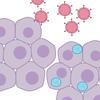Drosophila (fly)
. 9/27/2019. “Drosophila melanogaster: a simple system for understanding complexity.” Dis Model Mech, 12, 10. Publisher's VersionAbstract
. 2019. “Methionine metabolism and methyltransferases in the regulation of aging and lifespan extension across species.” Aging Cell, Pp. e13034.Abstract
. 4/4/2019. “TRiP stocks contain a previously uncharacterized loss-of-function sevenless allele.” microPublication Biology. Publisher's Version
Micropublication relevant to TRiP fly stocks
. 2019. “iProteinDB: An Integrative Database of Post-translational Modifications.” G3 (Bethesda), 9, 1, Pp. 1-11.Abstract
Navigating our online tools -- orthologs, literature mining, qPCR primers, and so much more!
. 2018. “A Membrane Transporter Is Required for Steroid Hormone Uptake in Drosophila.” Dev Cell, 47, 3, Pp. 294-305.e7.Abstract
Cell-based RNAi screening helps reveal host-microbe interactions--two new screen reports
. 2015. “Ex vivo genome-wide RNAi screening of the Drosophila Toll signaling pathway elicited by a larva-derived tissue extract.” Biochem Biophys Res Commun, 467, 2, Pp. 400-6.Abstract
. 2015. “Genome-wide RNAi screening implicates the E3 ubiquitin ligase Sherpa in mediating innate immune signaling by Toll in Drosophila adults.” Sci Signal, 8, 400, Pp. ra107.Abstract





